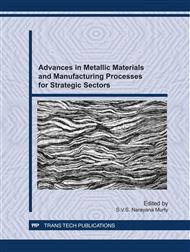p.50
p.66
p.85
p.93
p.101
p.113
p.119
p.125
p.132
On the Rapid Prototyping Technologies and Applications in Product Design and Manufacturing
Abstract:
Material removal, forming, casting and joining are the established manufacturing approaches and processes based on these approaches are being practiced even in modern industries with appropriate automation. Layer by layer material deposition method to produce prototypes from a solid model is relatively new and was developed during last 10-15 years of 20th century. These processes were named as Rapid Prototyping (RP) or Solid Freeform Fabrication (SFF). Today there are many commercial RP system and most of these able to deposit liquid or solid/powder polymer based materials. Some systems are also able to deposit blends of polymer and metal or ceramic. Latest trend in this area is to deposit metals or alloys with variable composition and hence to produce functionally graded material. This paper describes in general the details related to RP processes, data preparation, and various commercial RP technologies. The article also discusses applications these processes.
Info:
Periodical:
Pages:
101-109
Citation:
Online since:
January 2012
Authors:
Price:
Сopyright:
© 2012 Trans Tech Publications Ltd. All Rights Reserved
Share:
Citation:


